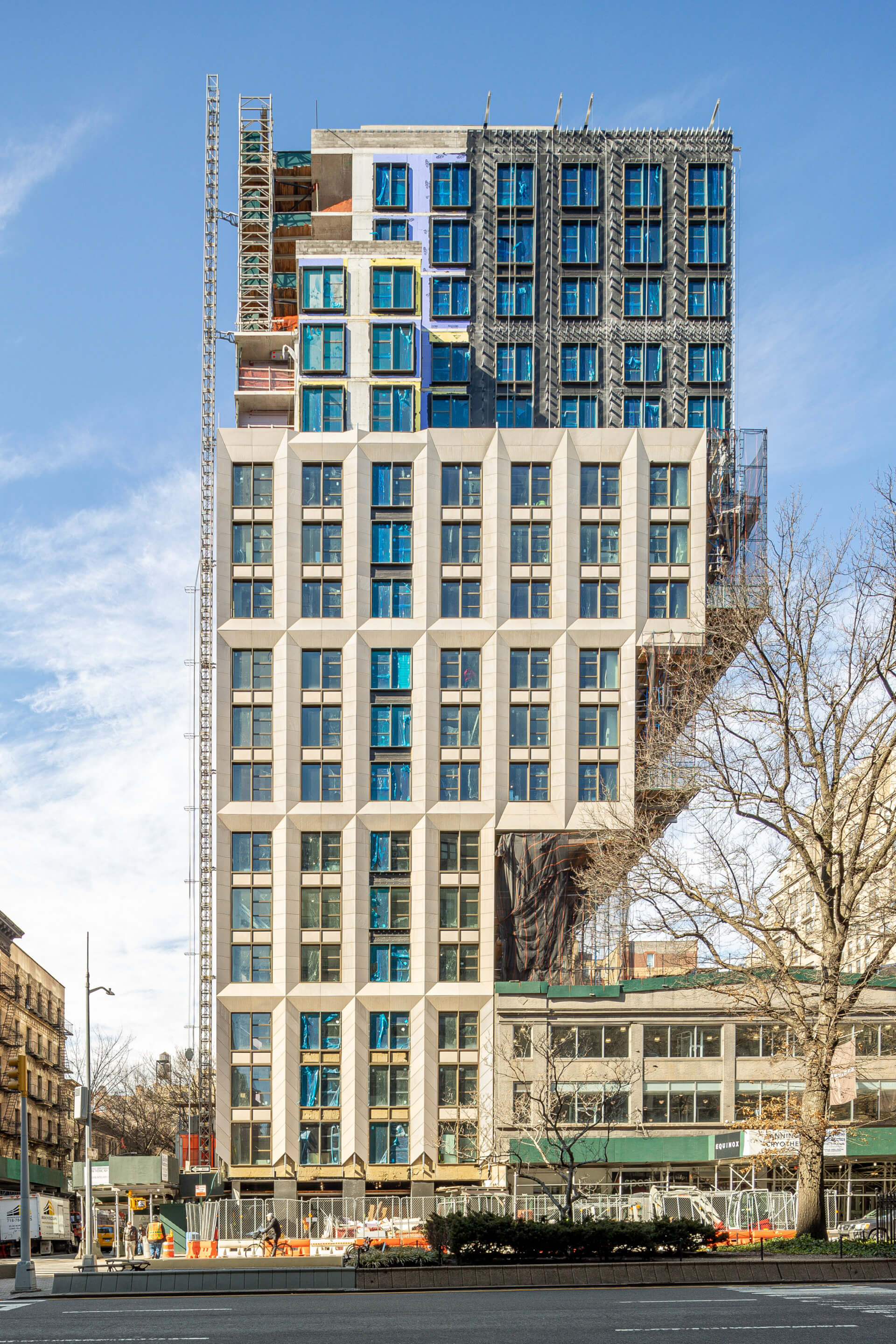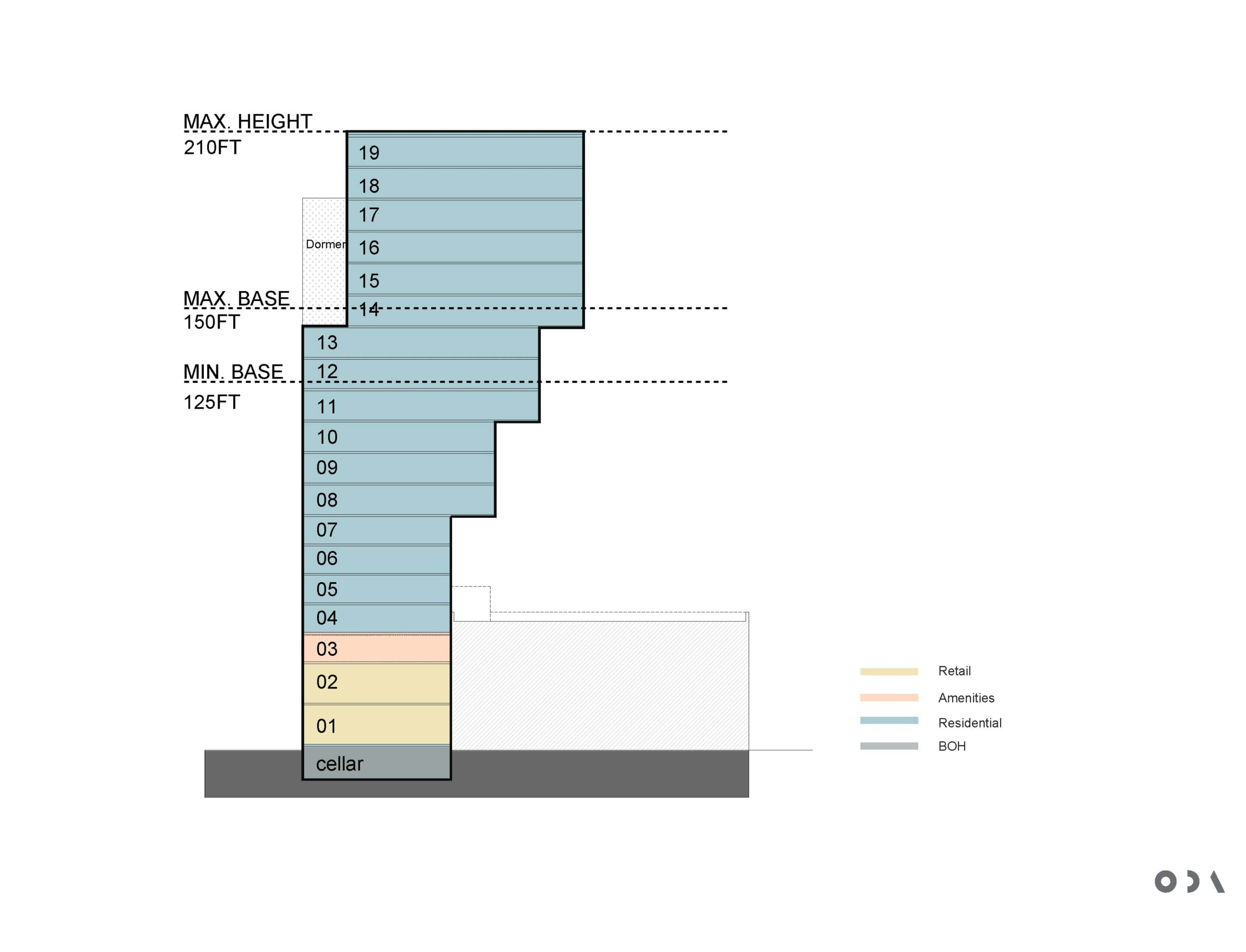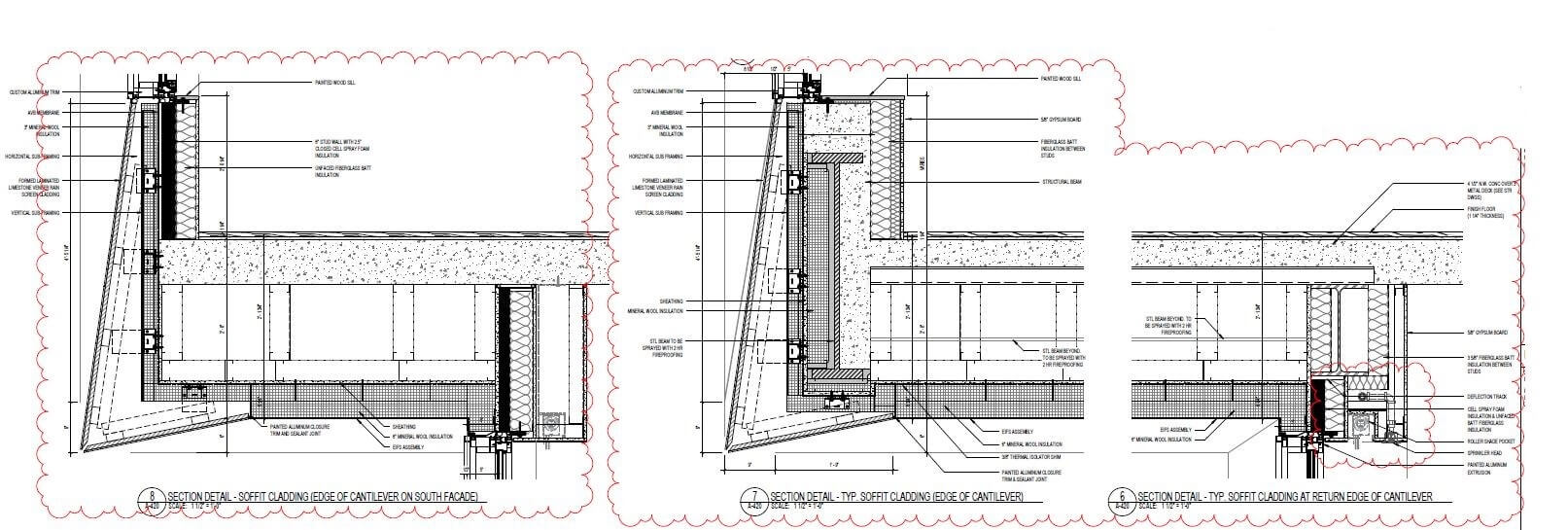- Architect
ODA - Location
Manhattan - Completion Date
Estimated spring 2022 - Facade Consultant
Thornton Tomasetti - Facade Fabricator and Limestone
Manufacturer
GGL Enterprises - General Contractor
Urban Atelier Group - Glazing Manufacturer
Guardian Glass
Real estate in New York City is a notoriously pricey commodity, and developers have long pushed buildings ever upward in a frantic bid to maximize their investments. But zoning laws place limits on those skyward thrusts, so in response, architects and engineers are compelled to find new solutions that boost floor-area ratios while achieving aesthetic dynamism. Few are as dynamic as the Westly, a gravity-defying new residential development on Manhattan’s Upper West Side.
The approximately 140,000-square-foot project is the handiwork of local architecture firm ODA, which has completed numerous projects across the city that, in their massing, resemble Jenga constructs ensconced in glass, concrete, or stone. The Westly follows in this vein: The base of the tower rises from a 50-foot-wide lot at 251 West 91st Street and cantilevers thrice over its northerly neighbor.

The building broke ground in September 2019 and was expected to open its doors in late 2021. But social distancing requirements enacted in March 2020 threw a spanner in the works. After construction crews set the foundation, which includes rock anchors to stabilize the topsy-turvy structure, construction continued at a rate of approximately one floor per week, until workers hit the eighth floor, where the first cantilever juts 25 feet outward. The two successive cantilevers at the 11th and 14th floors protrude 40 and 55 feet, respectively.
Unlike with peer projects that rely on diagrid trusses, ODA, in collaboration with structural engineer WSP, opted for a concrete Vierendeel system. The decision ensured a rectilinear profile, which allows for nonobstructed and standardized window openings. However, the incorporation of those larger spans presented construction challenges that required special permitting.

Kris Levine, ODA’s technical director, explained what this entailed: “When the first cantilever was erected, we had to obtain an After Hours Work Variance Permit from the NYC Department of Buildings in order to most efficiently and safely use the cranes needed to hoist the steel beams over the building and lay the foundation. During this time, the construction crew were permitted by the city to work for 61 hours straight.”
Each cantilever was built atop a temporary steel platform that branched off from the tower’s superstructure. The three cantilevered floor plates required between three and four weeks of construction apiece. “In order to secure the structure of the cantilevers, steel cross-bracings were put in place before the concrete of each floor was poured,” continued Levine. “These diagonal beams served as temporary support, and once the concrete form was set and floating, they were torched out and the building was left with the concrete.”

This being the Upper West Side, it was important to the design team to blend the new building into its historic context. To that end, the concrete structure was clad with a limestone-veneered rainscreen suspended from a standard girt system. The panels extend over 1 foot from the superstructure to the property line in a chevron-like pattern at both spandrel and beam to evoke nearby masonry massing. The rainscreen is backed by 3 inches of wool mineral insulation and a 6-inch stud wall with closed cell spray foam insulation.
The Westly is expected to open later this spring.




